Is your Bird of Paradise not producing beautiful flowers? Is the plant not growing well under your care? You might not be feeding it properly. What you feed your plant can make all the difference in how it grows and blooms.
Today, you’ll learn about fertilizers for the Bird of Paradise. I’ll walk you through the proper feeding schedules and signs that indicate your plant is hungry. I’ll also make sure you don’t commit common feeding mistakes.
Whether or not you’re new to growing a Bird of Paradise plant, this guide will steer you in the right direction. It will ensure that your plant not only survives but thrives in your garden.
- Related article: Birds of Paradise Plants
7 Key Takeaways on Bird of Paradise Fertilizer
- Fertilize your Bird of Paradise plants with a 20-20-20 N-P-K ratio of balanced nutrients to help them thrive.
- Fertilizer should be applied on the base of your Birds of Paradise to prevent stem and leaf damage.
- Birds of Paradise and other outdoor plants benefit from organic mulch. This helps improve soil health and moisture retention.
- How frequently you fertilize should depend on the type of fertilizer used and the growth rate of your Bird of Paradise. Liquid fertilizer should be applied every two weeks, and granular feeding should be done monthly.
- Yellowing leaves and slow growth are signs that your Bird of Paradise plants are not getting enough nutrients.
- Don’t overfertilize your Birds of Paradise. Doing so can harm its roots and impact its overall health negatively.
- March to September is the best time to fertilize your Birds of Paradise.
What to Feed Bird of Paradise Plants
Bird of Paradise are tropical plants that thrive in rich, loamy, well-draining soil. Any variety of this plant should be fed regularly because they need a good amount of nutrients.
For outdoor plants, a 2-3 inch layer of mulch made up of leaves, wood chips, pine needles, and bark will be helpful as an organic fertilizer. Adding some porous materials like gravel or sand will help with water drainage.
Mulching helps prevent weeds, but you need to make sure there isn’t any mulch within 2 to 3 inches (6 to 8 cm) of the plant. This helps birds of paradise plants get enough light.
A balanced fertilizer is recommended for Birds of Paradise plants. The NPK ratio of nitrogen, phosphorus, and potassium should all be the same. For example, a balanced N-P-K ratio of 20-20-20 NPK will be a good option.
Nitrogen (N) is vital to achieve vibrant green foliage, while phosphorus (P) and potassium (K) are essential for promoting blooming and overall plant health. Steer manure is an excellent choice for a natural fertilizer.
Feeding Bird of Paradise Varieties
There are many varieties of bird of paradise plants. Some are more drought-tolerant than others. Others grow better in full sun than others. There are even some species that prefer shade.
These are a few of the common bird of paradise varieties and how to fertilize them.
1. Feeding the Orange Bird of Paradise – Strelitzia reginae
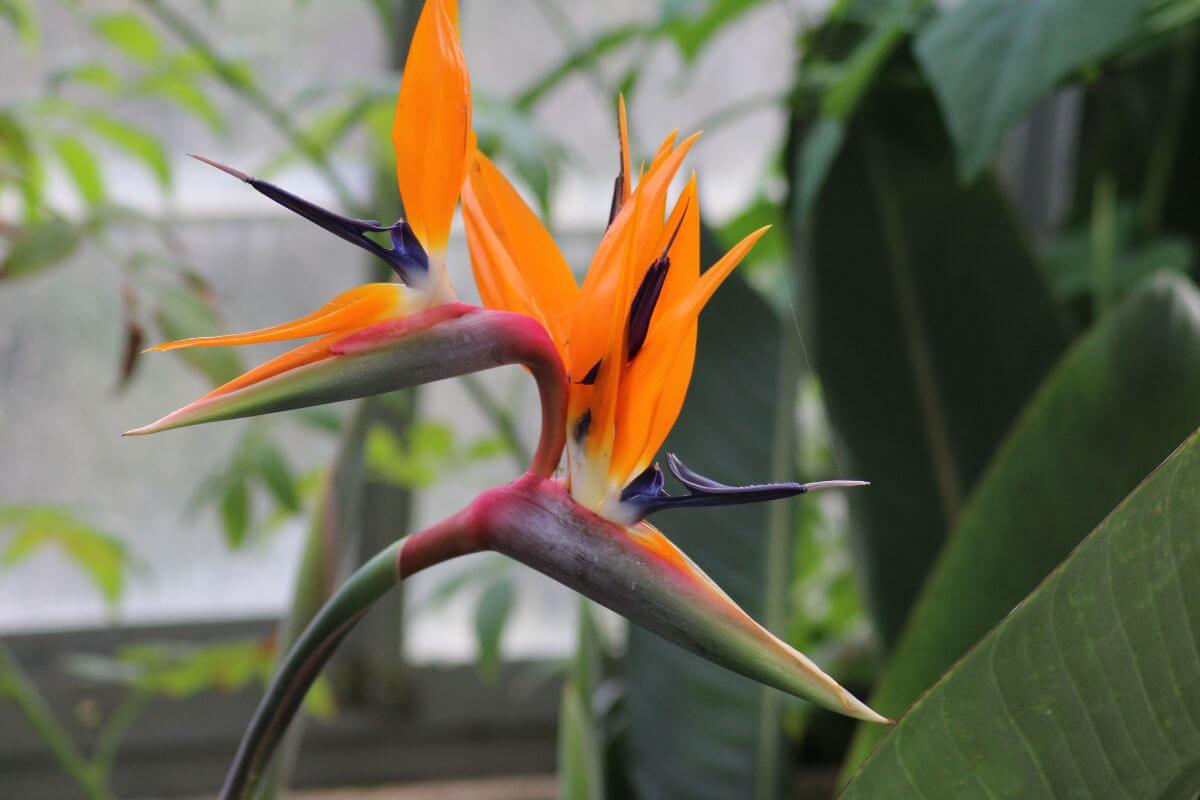
The Orange Bird of Paradise is one of the most popular Birds of Paradise varieties. It grows best under direct sunlight and does well in dry conditions.
This plant is a heavy feeder and needs a balanced fertilizer every 1-2 weeks. Use a liquid fertilizer that’s diluted to half-strength for continued healthy growth. You can feed it liquid fertilizer diluted to half-strength weekly during the growing season.
Using liquid fertilizer at half-strength means using half the recommended amount. For example, if the instructions say 1 tablespoon per gallon, use 1/2 tablespoon per gallon.
I recommend Triple 10 All Purpose Liquid Fertilizer because it also provides amino acids and seaweed extracts, which are both beneficial for Bird of Paradise plants.
During the winter months, fertilizing once a month during your Bird of Paradise’s dormant phase will be more than enough. Use a granular, slow-release, water-soluble fertilizer.
- Learn more: Care Instructions for Orange Bird of Paradise
2. Feeding Mandela’s Gold Bird of Paradise — Strelitzia reginae
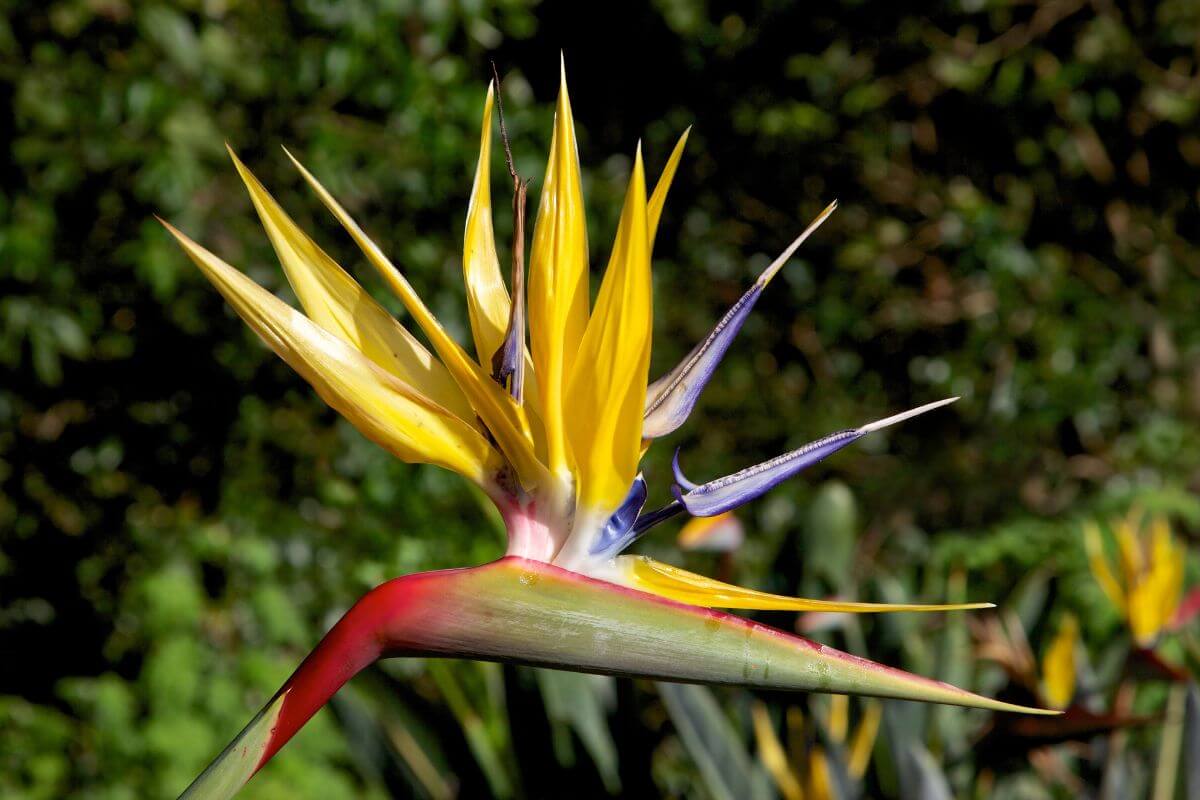
Mandela’s Gold is a hybrid plant that is more sensitive to cold weather, so be sure to keep it in warmer conditions. Feed this Strelitzia reginae variety once every two weeks in the growing season.
You can also help it by adding a layer of compost as mulch to help retain moisture. Using a watered-in fertilizer during the summer, once a month, will also help.
Using a fertilizer with more potassium and less phosphorus can help your Mandela’s Gold produce beautiful blooms. Use a 3:1:5 slow-release fertilizer every two months.
3. Feeding the White Bird of Paradise – Strelitzia nicolai
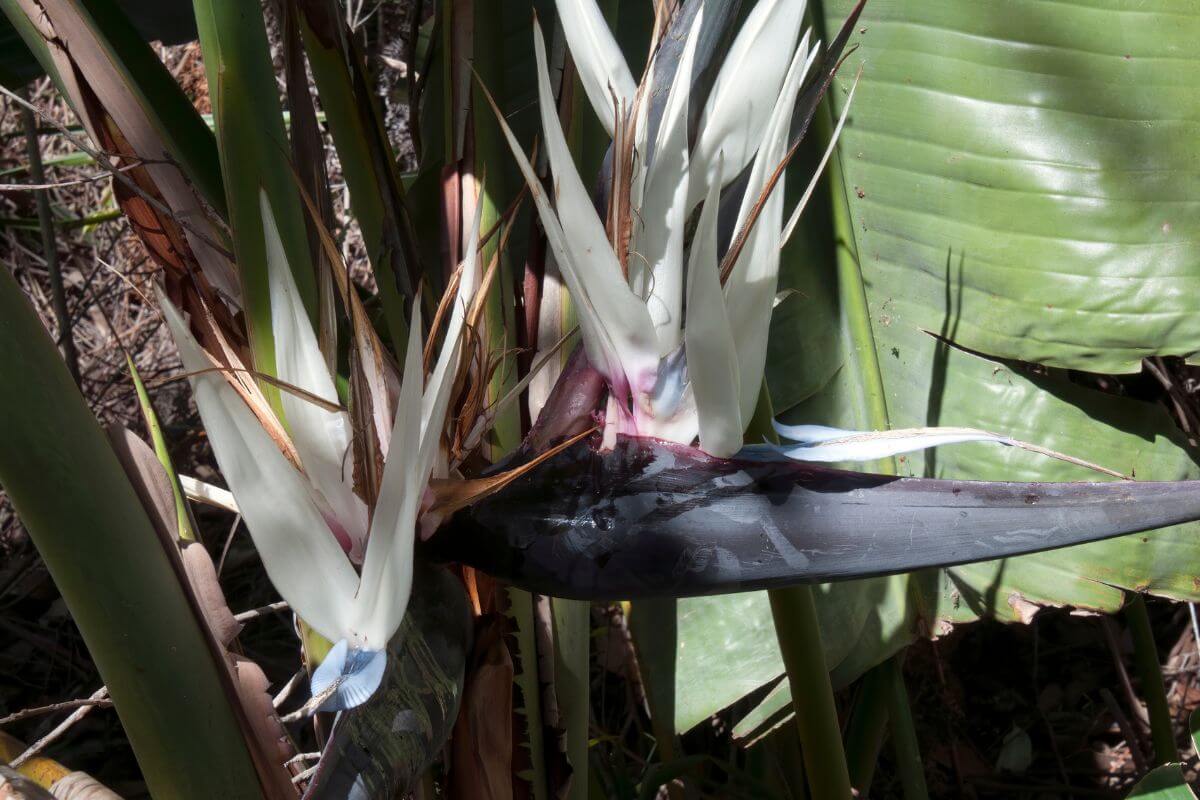
When you buy a White Bird of Paradise from the nursery, it comes pre-fertilized and doesn’t need extra nutrients for at least six months. This initial fertilization ensures your plant has everything it needs to thrive in its early stages at home.
After the first six months, it’s important to fertilize your White Bird of Paradise every three months to keep it healthy and promote growth. For the best results, use a liquid fertilizer like TPS Bird of Paradise Fertilizer.
Apply the liquid fertilizer from April to October, which is the plant’s active growing period. Regular feeding during this time will help your White Bird of Paradise flourish and reach its full potential.
- Read more about our recommended Care Tips for White Bird of Paradise
4. Feeding the Yellow Bird of Paradise – Caesalpinia gilliesii
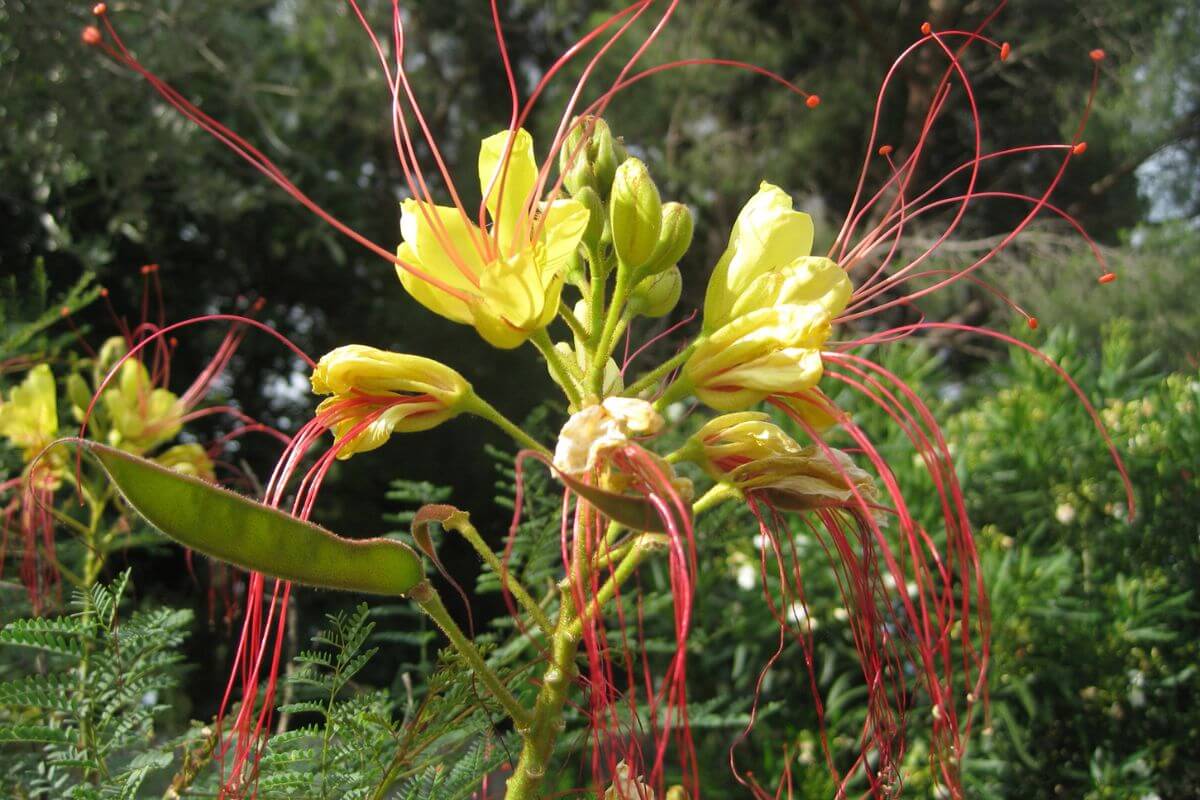
The Yellow Bird of Paradise is another popular ornamental plant. It has small, round leaves and flowers on long stems.
This plant thrives without fertilization and can survive on natural nutrients. Just use a slow-release fertilizer once a month during the growing season. It will help with flowering.
A balanced, slow-release fertilizer with a 20-20-20 NPK ratio will be good for your Yellow Birds of Paradise. A fertilizer that has a higher nitrogen content will discourage blooms, so be sure to keep the balance.
- Learn more about the Yellow Bird of Paradise Flower
5. Feeding the Red Bird of Paradise – Caesalpinia pulcherrima
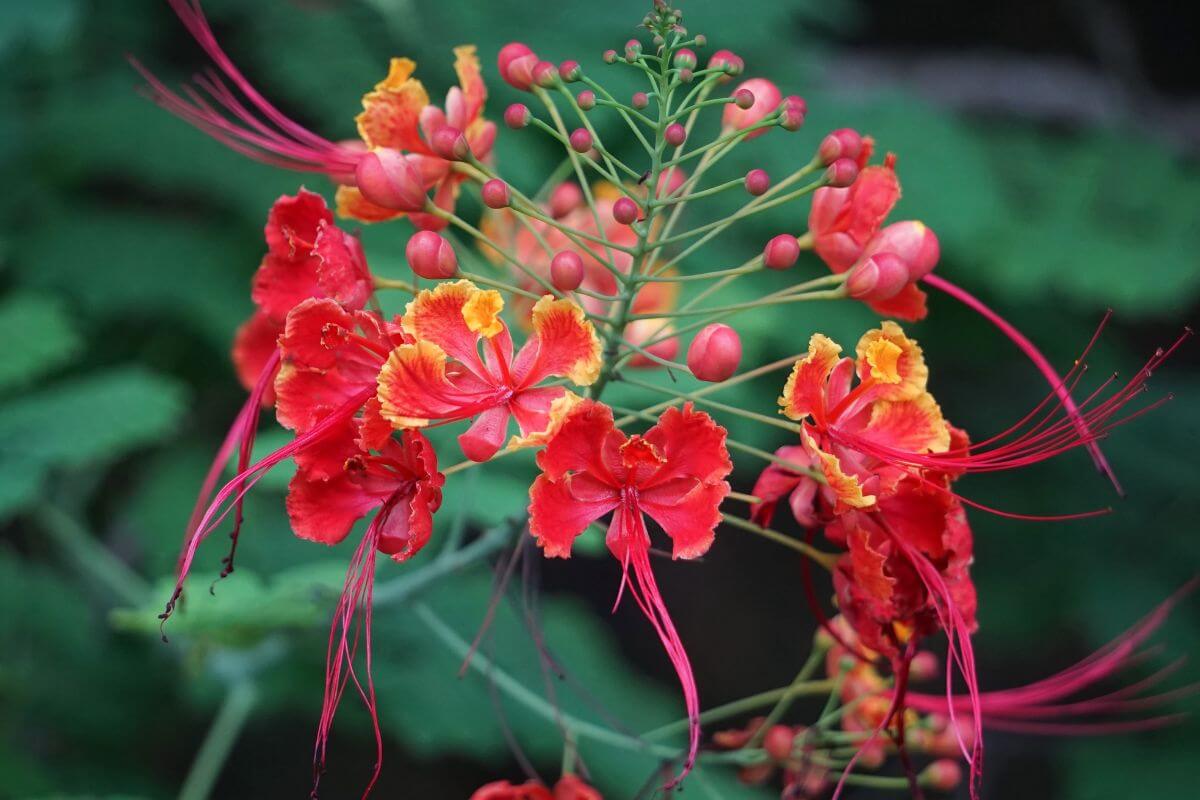
When nurturing your Red Bird of Paradise during its early stages, it’s essential to provide proper nutrition without overdoing it.
Use a balanced fertilizer diluted to half strength during the growing phase of your Red Birds of Paradise to prevent overfertilizing.
Once your plant is established, it becomes more resilient and generally requires less frequent fertilization, thriving even in less-than-perfect soil conditions.
However, apply a slow-release organic fertilizer annually in the spring to maintain the plant’s vigor. This ensures a steady supply of nutrients without heavy fertilization throughout the year.
- Learn more: Red Bird of Paradise Guide
6. Feeding the Mexican Bird of Paradise – Mexicana caesalpinia
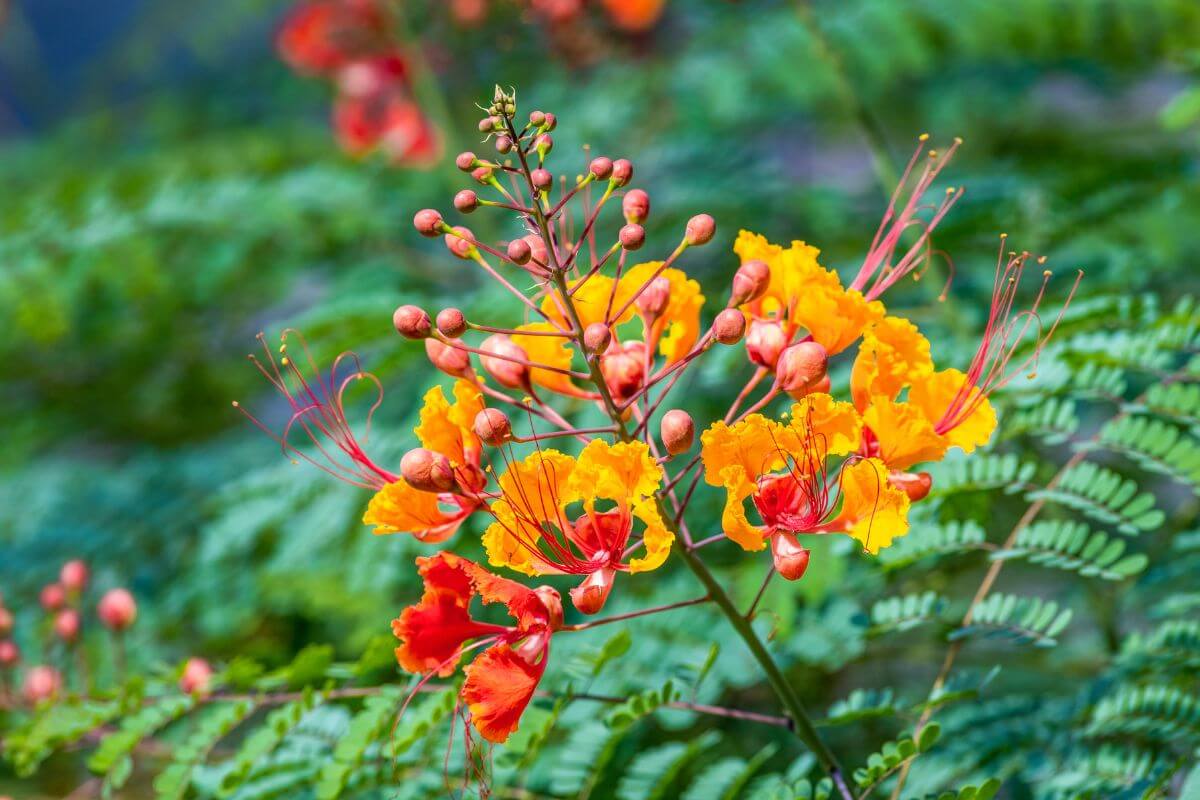
The Mexican bird of paradise is a desert plant, so it doesn’t need that much fertilizer at all. But fertilizer will help it bloom.
Feed them in early spring as they begin active growth, it’s essential to choose the right fertilizer.
A balanced fertilizer will allow the plant to absorb all the essential nutrients without burning itself out. Adding it once a month will be more than enough during the growing season.
- Read more about Caring for the Mexican Bird of Paradise Flower
How to Choose Your Bird of Paradise Fertilizer
There are many different types of Bird of Paradise fertilizers available today. However, it is ideal to use one with an even NPK ratio, as this enhances the flowering of Bird of Paradise plants.
Soil pH tests are also important. You should always be testing your soil before planting anything. If you find that it’s too acidic, add some lime. If it’s too alkaline, add some sulfur. These are both common ways to adjust soil pH levels.
1. Slow-Release Granular Fertilizers — Easy to Apply and Wash Away
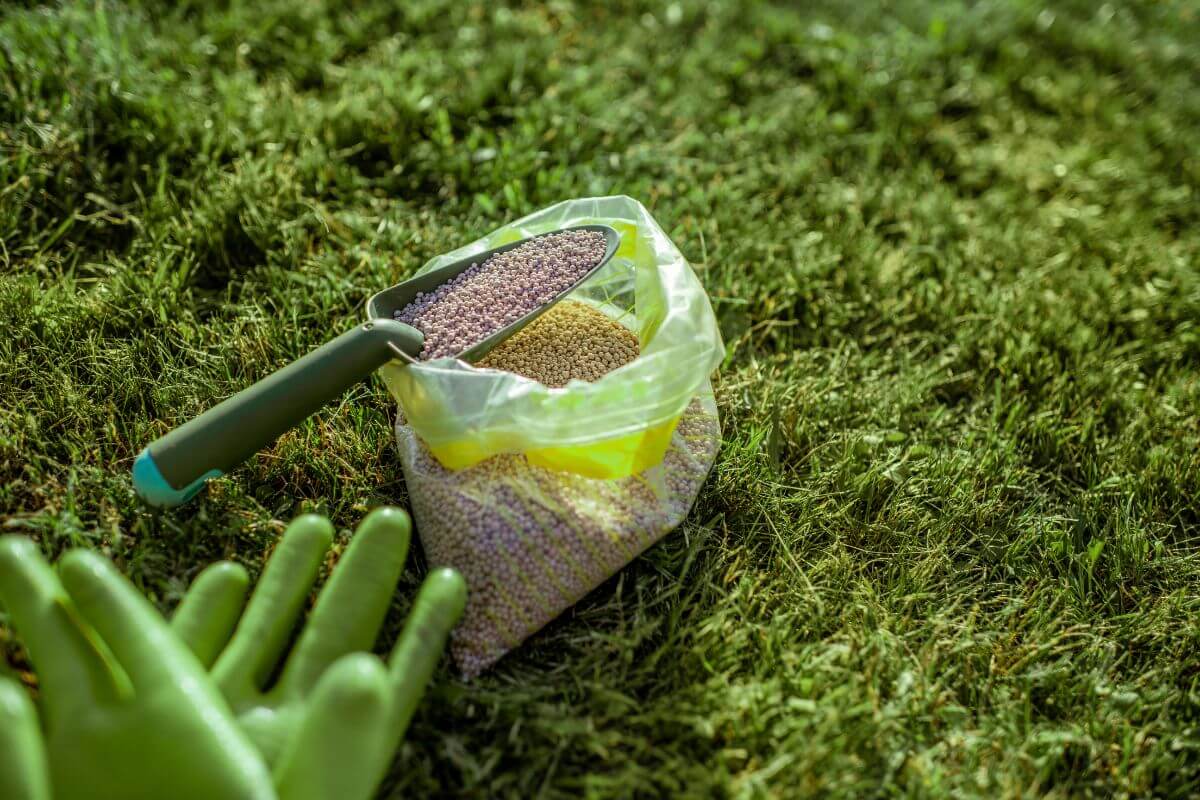
Granular fertilizers are generally preferred over liquids because they’re easier to apply. They’re also less likely to wash away. However, granular fertilizers do tend to burn plants if applied in excess. So you’ll want to test your soil first. Then you can decide whether to go with a granular or liquid fertilizer.
Granular fertilizers are also slow-release. That means they won’t burn plants like liquid fertilizers can as the nutrients are released over time.
Sprinkling them over the soil around plants is important because it helps activate the fertilizer compounds. Apply a rate of one pound every three months to a full-grown clump. Watering is also necessary to get the nutrients out of the fertilizer.
Granular fertilizers can also contain micronutrients such as iron and manganese. Those are essential to healthy plant growth.
2. Liquid Fertilizer — Faster-Acting Than Granular and Easier to Use
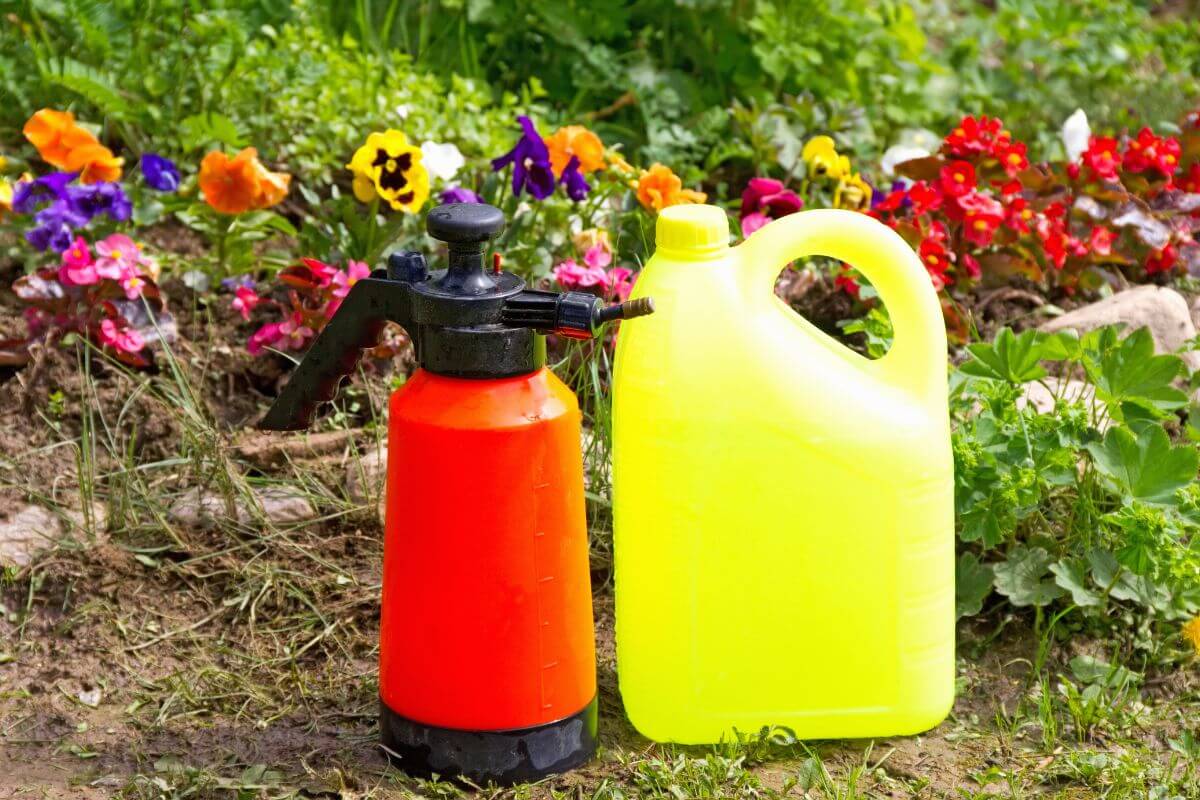
Liquid fertilizers are usually faster-acting than granular ones. They’re also more concentrated, which makes them easier to use. Liquid fertilizers can often include micronutrients, such as small amounts of iron and manganese as well.
If you choose to use a liquid fertilizer, make sure you dilute it properly. Too much fertilizer can cause problems for the plants.
Liquid fertilizer can be purchased as either ready-to-use or concentrate formulas. Fertilizer needs to be watered in after application.
Liquid fertilizers can be used as foliar spray. Over-application may cause root or leaf burn. Always follow the manufacturer’s instructions when using liquid fertilizers.
3. Fertilizer Spikes — Best for Seedlings and Young Plants
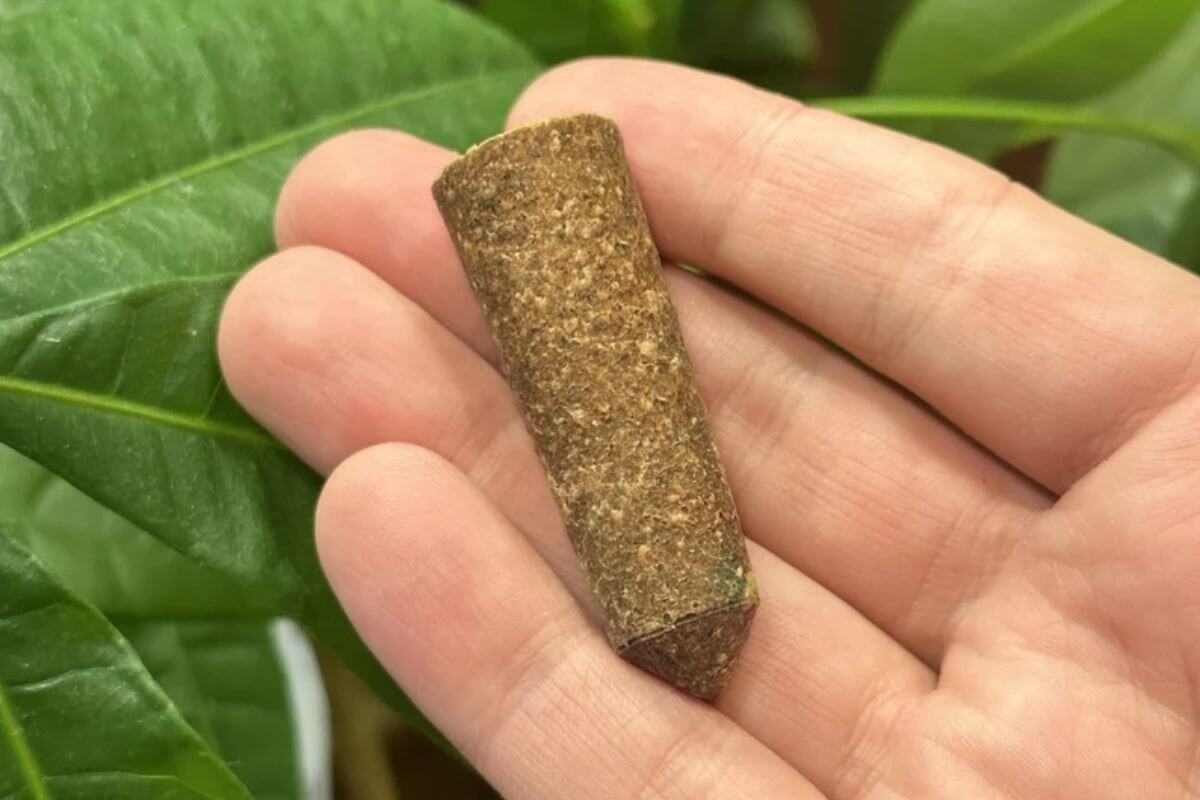
Fertilizer spikes are an easy way to fertilize your garden. You simply need to push them into the ground around your plants. They’re perfect because you don’t have to measure out fertilizer anymore.
Spikes are typically used for seedlings and young plants. They’re easy to handle and apply.
Spikes can be used as an alternative method for fertilizing, but not if you want to save money. These will usually cost more than granular or liquid fertilizer. You may also need more than one spike for larger plants.
4. Organic Fertilizers — Stimulates Growth and Flowering
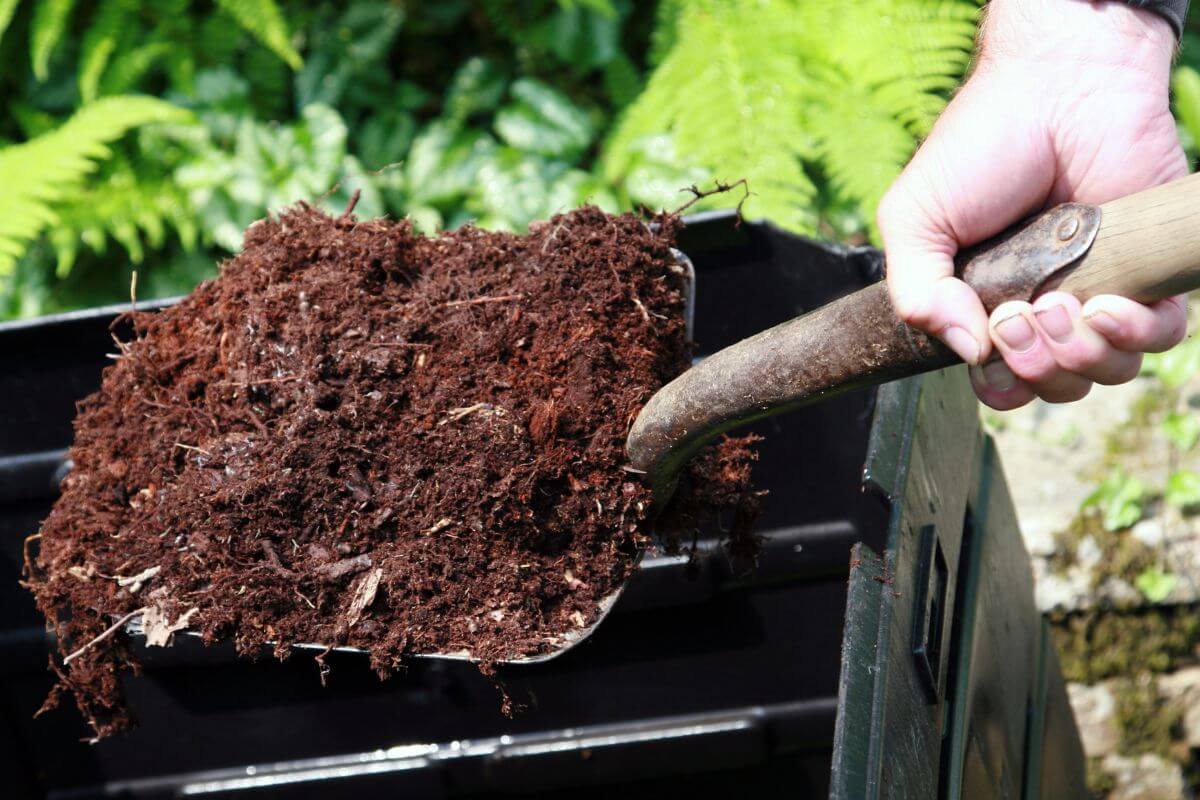
Organic fertilizers like sewage sludge, manure, or blood meal provide a slow, steady release of nutrients (source). They enrich the soil, support a healthy microbiome, and stimulate growth and flowering for bird of paradise plants.
Apply a compost mix or worm castings every couple of months to improve soil structure, moisture retention, and nutrient supply. For best results, feed organic fertilizers every 6-8 weeks during the active growing season.
This all-natural plant food offers a balanced diet without the risk of chemical burns.
Guide to Fertilizing Bird of Paradise Plants
How to Fertilize Bird of Paradise Plants:
- Outdoor Plants – Fertilize every three months during the growing season. Apply fertilizer as directed and avoid leaving residues on leaves.
- Mulching – Use organic materials like wood chips or bark (2-3 inches deep) to enhance soil fertility naturally.
- Indoor Plants – Fertilize during the active growing season (March to September). Avoid fertilizing during the winter dormant period (source).
How Often to Fertilize Bird of Paradise Plants:
- Liquid Fertilizer – Apply every two weeks during the growing season, especially in dry climates. Keep the soil moist.
- Granular Fertilizer – Apply once a month or every two months, depending on the type. Fast-acting granular fertilizers may require monthly applications.
When and When Not to Fertilize Bird of Paradise Plants:
- Fertilize anytime between March and September during the growing season.
- Avoid fertilizing after flowering begins as most flowers will have been pollinated.
- The best times to fertilize are early spring and late summer for optimal growth.
What to Know About Bird of Paradise Fertilizer Burn:
- Over-fertilization can cause yellowing leaves, brown spots, and slowed growth, making plants vulnerable to pests.
- Avoid spilling or scattering fertilizer directly on the plant stem, foliage, or flowers.
- Be aware that excess phosphorus can cause nutrient deficiencies. Always read fertilizer labels and understand your plant’s nutrient needs.
Common Mistakes to Avoid When Fertilizing Bird of Paradise
The only thing worse than not feeding your Bird of Paradise plants is feeding them incorrectly. Here’s what you should never do when feeding these tropical plants:
- Using Too Much Fertilizer – Overfeeding your Bird of Paradise can harm its roots and even kill it. Follow the instructions on the fertilizer package carefully.
- Choosing the Wrong Fertilizer – Avoid fertilizers with too much nitrogen. Excessive nitrogen can cause the plant to produce lots of leaves but fewer flowers.
- Not Giving Enough Fertilizer – Insufficient nutrients can lead to slow growth and pale leaves. Watch for signs of nutrient deficiency and adjust the fertilizer amount accordingly.
- Fertilizing at the Wrong Time – Feed your Bird of Paradise during spring and summer when it’s growing rapidly. Do not fertilize in winter when the plant is resting and requires fewer nutrients.
- Bad Soil Conditions – Ensure your Bird of Paradise is planted in well-draining soil with the right pH. Avoid metal pots as they can overheat and damage the roots.
Feeding Bird of Paradise Final Thoughts
When you feed your Birds of Paradise properly, they’ll not only grow well but also stay healthy. Keep fertilizer balanced with equal parts nitrogen, phosphorus, and potassium — N-P-K 20-20-20 — to keep the leaves green and the flowers blooming.
Never use too much fertilizer. You’ll also want to place the fertilizer on the plant’s base instead of the leaves or stem where it can do some damage.
Birds of Paradise plants benefit from mulch with materials like wood chips or bark to keep the soil healthy and moist. Feed them granular fertilizer every month and liquid fertilizer every two months during the growing season.
You’ll also want to regulate food based on their needs during the dormant period. Watch out for signs that they may need more or less fertilizer.
Understand how to feed your Bird of Paradise, and you can make it a healthy, beautiful, lasting feature in your garden.
For more on Birds of Paradise plants, check out these articles:




